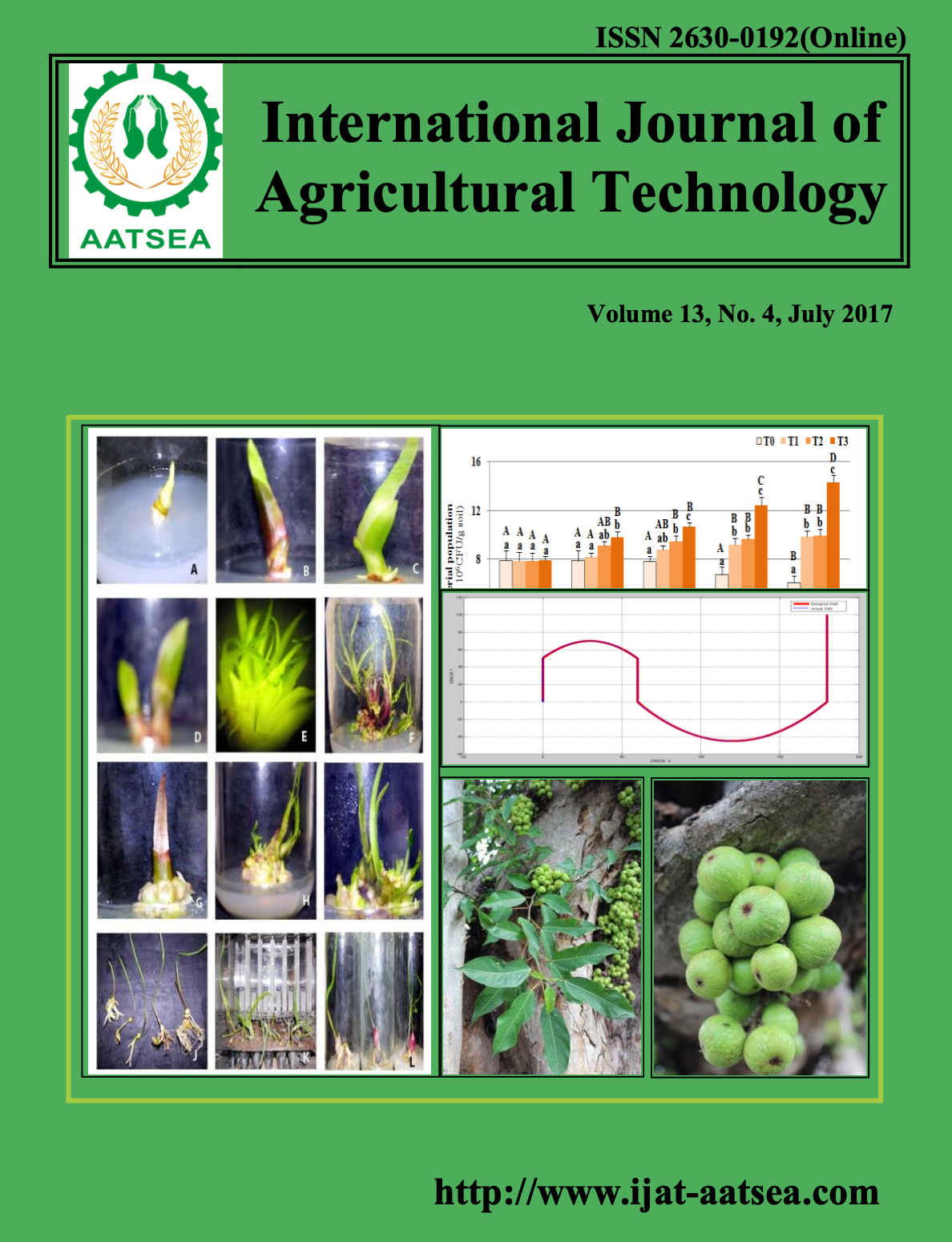Is raw sugar produced from sugarcane (Saccharum officinarum L.) carbon positive or negative?
Main Article Content
Abstract
Carbon footprint calculations for raw sugar manufacture was conducted with the aim of determining if the industry is carbon neutral or net contributory to carbon emission. A detailed procedure for the production of raw sugar from sugarcane was designed to account all the sources of carbon emission. The factory design was based on a capacity of 4000 tons per day, operating for 270 days per year, 24 hours per day. The total carbon footprint accounted all the emissions and savings from plantation, factory operations, and products end-use. A total of 53,099.59 kg CO2 per hectare was computed or 643.63 kg CO2 per ton cane or 6.31 kg CO2 per kg sugar.
The embedded emissions of the materials during construction (pre-operational period) was also included, which served as the industry’s “carbon debt.” But this“carbon debt” was computed to be offset within 0.26 years.
With the co-generated electricity from bagasse fueling of 26.97MW and daily exported to the grid , the calculated carbon savings (compared to the Philippine electricity carbon intensity) was 2,089 tons CO2 per ha per year. At the field level of cane production, no cane burning/trash farming practice could shift sugarcane production from carbon emitting into carbon sequestering (carbon negative). Hence, raw sugar produced from the sugarcane plant can be carbon negative rather than positive. This means that instead of contributing to the emission, the whole system fixes in more carbon dioxide.
Article Details

This work is licensed under a Creative Commons Attribution-NonCommercial-NoDerivatives 4.0 International License.
References
Batjes, N. H. (1999). Management options for reducing CO2-concentrations in the atmosphere by increasing carbon sequestration in the soil. Wageningen, Netherlands. pp. 410-200
Billington, B. H. P. (2011). Greenhouse Gas. Olympic Dam Expansion Supplementary Environmental Impact Statement. Retrieved from http://www.bhpbilliton.com/home/ society/regulatory/Documents/Olympic%20Dam%20Supplementary%20EIS/Documents/Chapter%2013%20Greenhouse%20Gas.pdf
Biograce GHG Calculation Tool. (2013). Retrieved from http://www.biograce.net/content/ ghgcalculationtools/overview.
Clark, D. (2013). CO2e emissions from biomass and biofuels. Cundall Johnston and Partners LLP. 10 pp.
Corpuz, F. H. and Aguilar, P. S. (1992). Specific energy consumption of Philippine sugar mills. Energy consumption of Philippine sugar mills. Proceedings of the PHILSUTECH 39th Annual Convention, Bacolod City. pp. 410-421.
Department of Environment and Natural Resources. (2008). DENR Administrative Order 2008–XX: Water Quality Guidelines and General Effluent Standards. Retrieved from http://www.emb.gov.ph/wqms/Draft%20DAO%20on%20the%20Revised%20WQG%20and%20GES%20rev%20121807.pdf.
Godilano, E. C. (2009). Global climate change and its impacts on agriculture and fishery production in the Philippines. Department of Agriculture. Information Technology Center for Agriculture and Fishery (ITCAF) Enterprise. Geospatial Information Systems for Analysis and Learning Laboratory. Quezon City, Philippines.
GREET (2013). A software of Argonne. National Laboratory.
Hammond, G. and Jones, C. (2011). Embodied Energy. Greenspec. Retrieved from http://www.greenspec.co.uk/embodied-energy.php.
Mendoza, T. C. (2017). No Burning Sugarcane Trashes Makes Sugarcane production - Net Carbon Sequestering. Journal of Agricultural Technology 13:247-267.
Mendoza, T. C. (2014). Reducing the carbon footprint of sugar production in the Philippines. Journal of Agricultural Technology 10:289-308.
Mendoza, T. C. and Samson, R. (2000). Estimates of CO2 production from the burning of crop residues. Environmental Science and Management 3:25-33.
Mendoza, T. C., Samson, R. and Elepano, A. R. (2004). Renewable biomass fuel as ‘Green Power’ alternative for sugarcane milling in the Philippines. Philippine Journal of Crop Science 27:23-39.
Patwardhan, A. D. (2008). Industrial Waste Water Treatment. PHI Learning Pvt. Ltd. Retrieved from http://books.google.com.ph/books?id=psf56CPmZsYC&dq=raw+sugar +factory+wastewater+treatment&source=gbs_navlinks_s.
Rosario, E. L., Paningbatan, E. P. and Dionora, A. G. P. (1992). Study on the causal factors of declining sugarcane quality in the La Carlota Mill District. Proceedings of the 39th Annual Convention PHILSUTECH. Assoc. Inc., Bacolod City, Philippines. pp. 169–184.
US EPA (1993). Emission factor documentation for AP-42 section 18. Office of Air Quality Planning andStandards. Retrieved from http://www.epa.gov/ttnchie1/ap42/ch01/bgdocs /b01s08.pdf.
US EPA (2011). Greenhouse gas emissions from a typical passenger vehicle. Office of Transportation and Air Quality Office. EPA-420-F-11-041.
Walser, M. L., Nodvin, S. C. and Draggan, S. (2010). Carbon footprint. Encyclopedia of Earth. Environmental Information Coalition, National Council for Science and the Environment, Washington, DC: Retrieved from http://www.eoearth.org/article/Carbon_footprint.
Wiedmann, T. and Minx, J. ( 2008). A definition of ‘Carbon Footprint’. Ecological Economics Research Trends. Nova Science Publishers, Inc, Hauppauge NY, USA. pp. 1–11.


